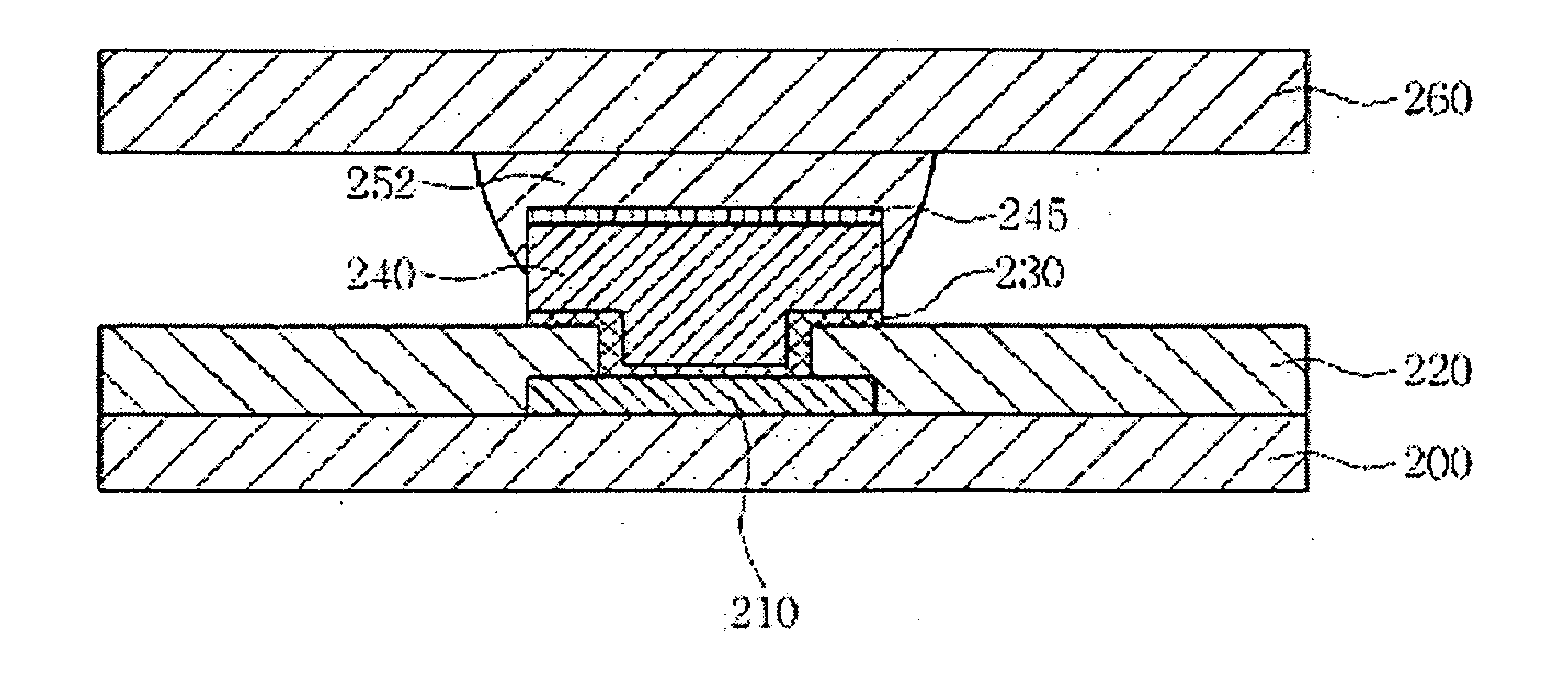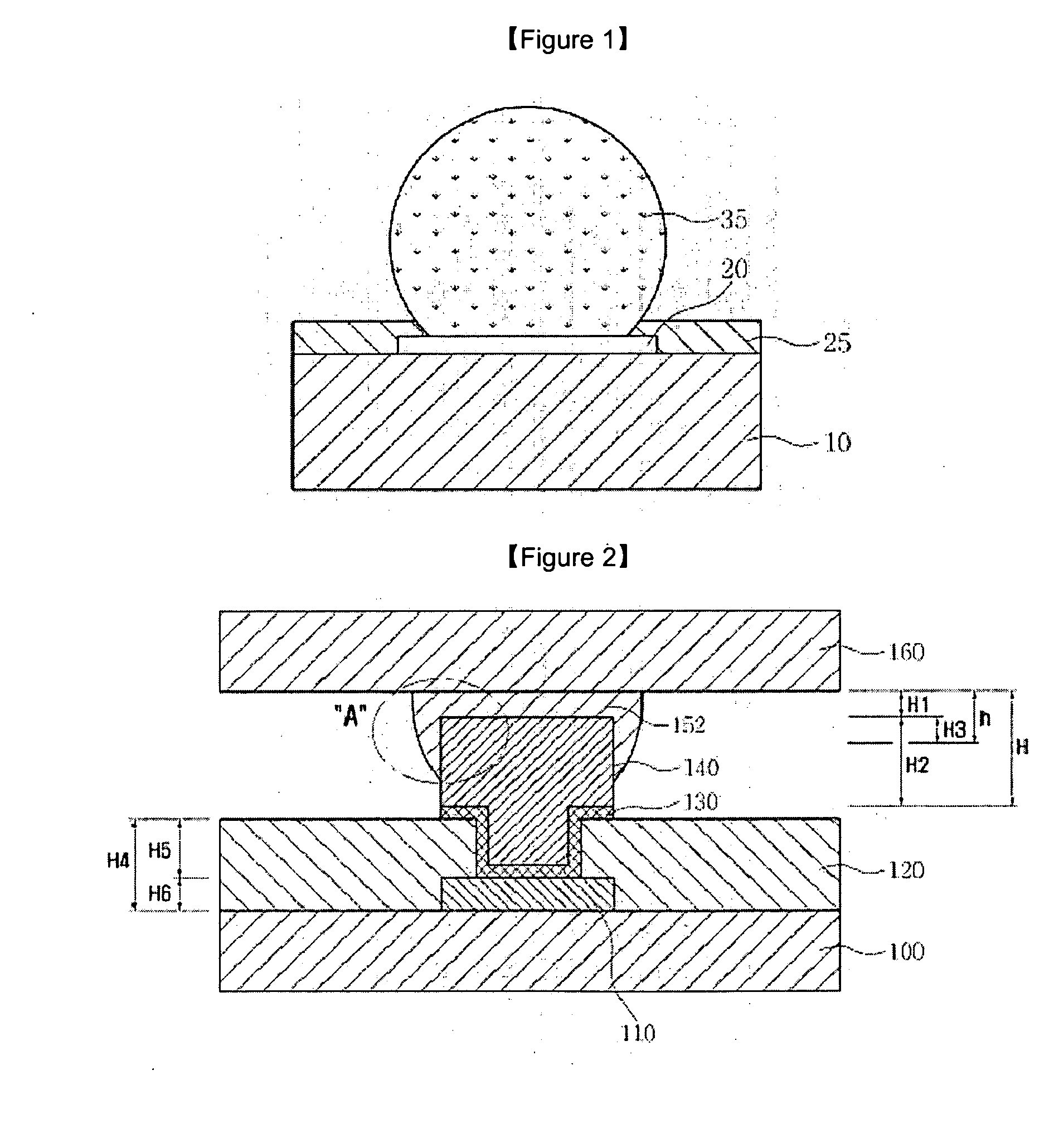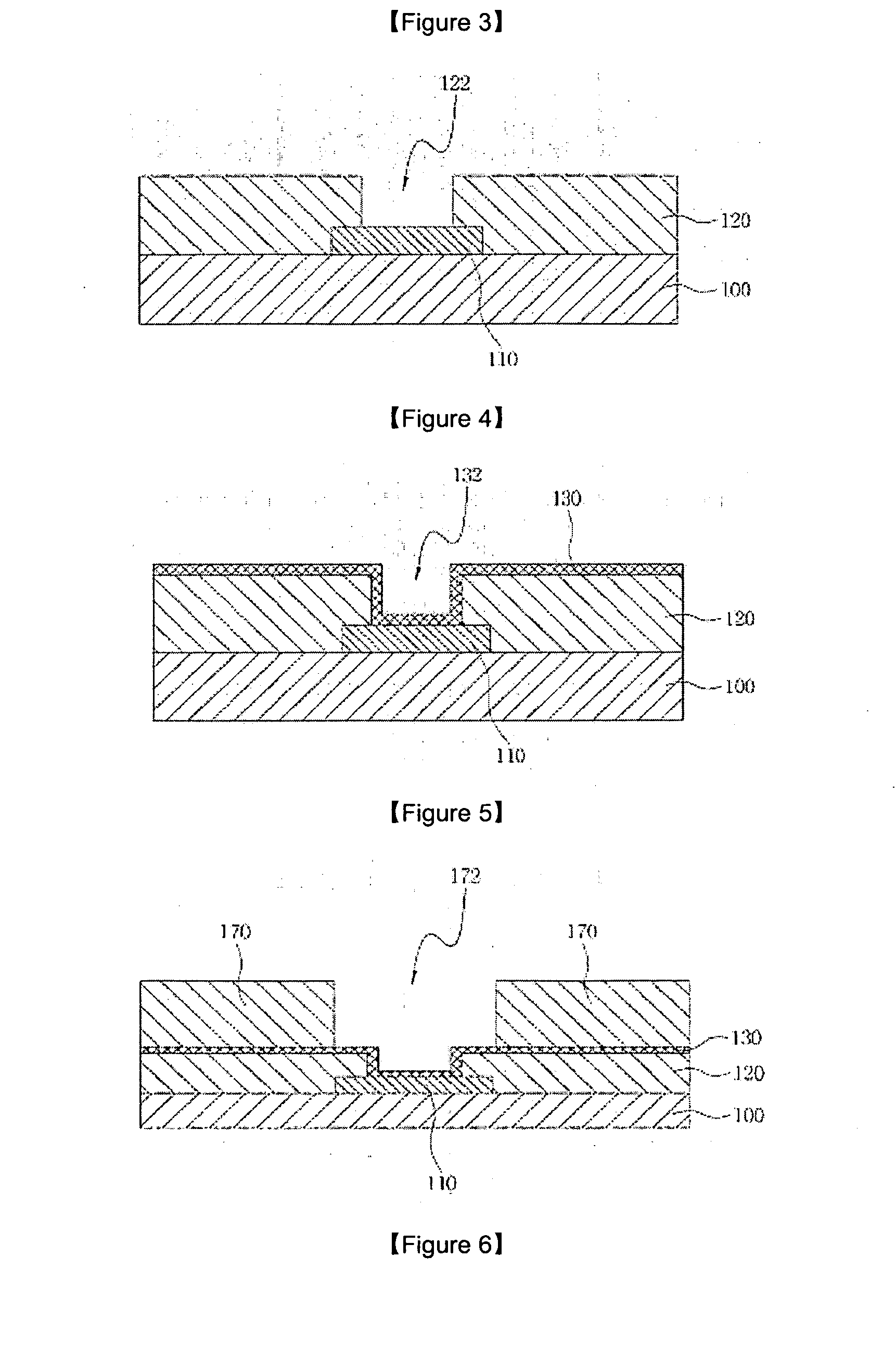Flip chip semiconductor package and fabrication method thereof
- Summary
- Abstract
- Description
- Claims
- Application Information
AI Technical Summary
Benefits of technology
Problems solved by technology
Method used
Image
Examples
Embodiment Construction
[0035]Hereinafter, embodiments of the present invention will be described in detail with reference to the accompanying drawings.
[0036]FIG. 2 is a sectional view of a semiconductor package according to an embodiment of the present invention. As illustrated, an electrode pad 110 is formed on a semiconductor substrate 100, a lower metal bonding layer 130 and an upper metal bonding layer 140 are sequentially formed on the electrode pad 110, and a solder bump 152 is formed on the upper metal bonding layer 140. A semiconductor chip 160 is mounted on one end of the solder bump 152.
[0037]The upper metal bonding layer 140 is formed in a post shape and extended upward. As illustrated in part “A” of FIG. 2, a part of the upper metal bonding layer 140 penetrates into the solder bump 152 to a predetermined depth H3 and thus, the vertical thickness h of the solder bump 152 is substantially reduced to H1.
[0038]The penetration depth of the upper metal bonding layer 140 can be determined by controll...
PUM
 Login to View More
Login to View More Abstract
Description
Claims
Application Information
 Login to View More
Login to View More - R&D
- Intellectual Property
- Life Sciences
- Materials
- Tech Scout
- Unparalleled Data Quality
- Higher Quality Content
- 60% Fewer Hallucinations
Browse by: Latest US Patents, China's latest patents, Technical Efficacy Thesaurus, Application Domain, Technology Topic, Popular Technical Reports.
© 2025 PatSnap. All rights reserved.Legal|Privacy policy|Modern Slavery Act Transparency Statement|Sitemap|About US| Contact US: help@patsnap.com



